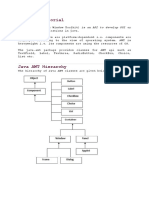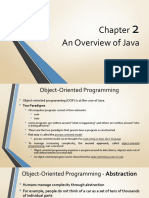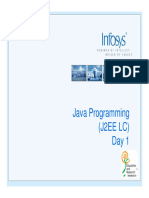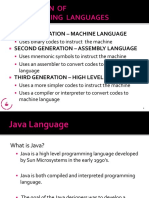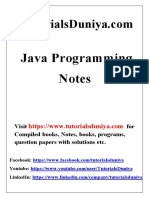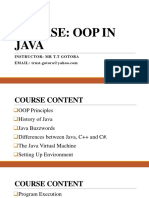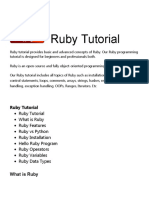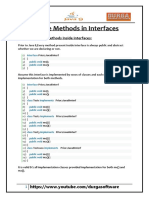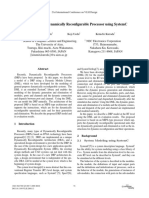0% found this document useful (0 votes)
98 views63 pagesJava Operators & Statements Guide
The document summarizes operators and statements in Java. It describes unary, binary, and ternary operators and their order of precedence. It covers arithmetic, logical, relational, and equality operators. It also discusses numeric promotion rules. Additionally, it explains statements such as if-then, if-then-else, switch, ternary operator, and blocks of code in Java.
Uploaded by
Đức Hiếu BùiCopyright
© © All Rights Reserved
We take content rights seriously. If you suspect this is your content, claim it here.
Available Formats
Download as PPTX, PDF, TXT or read online on Scribd
0% found this document useful (0 votes)
98 views63 pagesJava Operators & Statements Guide
The document summarizes operators and statements in Java. It describes unary, binary, and ternary operators and their order of precedence. It covers arithmetic, logical, relational, and equality operators. It also discusses numeric promotion rules. Additionally, it explains statements such as if-then, if-then-else, switch, ternary operator, and blocks of code in Java.
Uploaded by
Đức Hiếu BùiCopyright
© © All Rights Reserved
We take content rights seriously. If you suspect this is your content, claim it here.
Available Formats
Download as PPTX, PDF, TXT or read online on Scribd
/ 63












